The most used lasers are infrared, green and UV systems at the moment. A new type, blue laser started to attract some attention in 2017. Today, we want to introduce a leading technology from Laserline GmbH, a blue diode laser. What is a blue diode laser? How about the application potential? In the following text, Markus Ruetering, Asia sales manager of Laserline, will give us answers.
目前最常用到的激光是红外、绿光和紫外激光系统。在2017年,一种新型蓝色激光器逐渐开始吸引了人们注意力。今天,我们想要介绍一种来自Laserline公司的领先技术——蓝光半导体激光器。蓝光半导体激光器是什么?其应用潜力如何?在下面的文章内容中,Laserline的亚洲销售经理Markus Ruetering将给我们做出解答。
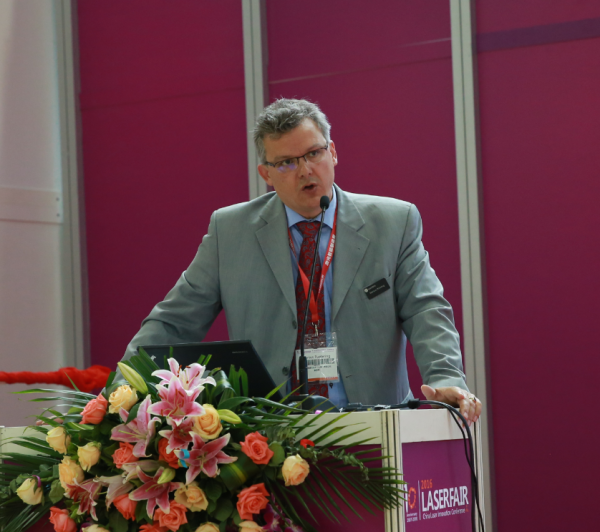
Markus Ruetering, Asia sales manager of Laserline
Laserline的亚洲销售经理Markus Ruetering
Laser Manufacture News: Laserline is a professional leading diode lasers supplier, so what products should we focus on in this year?
《激光制造商情》:Laserline是一家专业领先的半导体激光器供应商,我们今年应该关注的产品有哪些?
Markus: As a leading company in diode lasers, we keep developing our updated developments, so we are now manufacturing our diode lasers of its sixth generation already. We’ve already introduced our sixth generation of diode lasers to the world, which are suitable for several applications, with laser power levels in the range from 1 kW up to 25 kW. We also develop our own processing optics, where we can coverapplications like brazing, hardening, heat treatment, cladding, and plastic welding as well as newer applications like additive manufacturing or tape laying of CFRP’s. Our highlight of this year is a diode laser having a blue radiation of 450 nm. And we give it a high expectation.
Markus:作为一家领先的半导体激光企业,我们持续发展我们最新的发展成果,这就是为什么我们已经在生产我们的第六代半导体激光器了。我们已经推出了我们的第六代半导体激光器,它适合用于几种应用,功率在1kW到25kW之间。我们还开发了自己的光学加工镜头,我们可以覆盖钎焊、淬火、热处理、熔覆和塑料焊接等应用,以及增材制造或CFRP的层铺设等新应用。我们今年的亮点是一款有450nm蓝光的半导体激光器,我们对它抱有很高的期望。
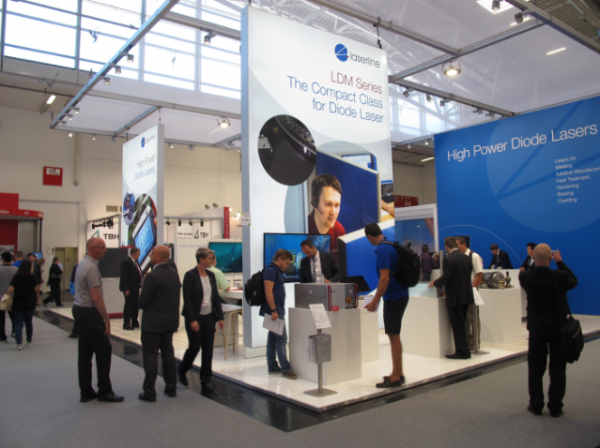
Laser Manufacture News: What are the advantages of the blue lasers?
《激光制造商情》:蓝光激光器有什么优点?
Markus: The blue lasers with a wavelength of 450 nm have a very high absorption into materials which have a high reflection for classical wavelengths emitted by industrial lasers, so called non-ferrous metals. Specifically for copper, gold as well as silver materials.It has slightly better absorption into aluminum, but our focus with blue lasers is mainly on copper materials, as well as gold and silver. So when we look into the application that is considered from companies in terms of batteries, electronics, and the so called e-mobility – electro mobility. We need to do a lot of copper application in terms of welding, and it’s found and reported in a lot of investigations that lasers in the infrared section, infrared wavelength, cannot weld copper materials with the reason of process window or sometimes not at all. Welding copper with a 1 µm laser in addition to creating a lot of spatter, so if you have done an application, for example, in the battery industry, you have to clean the part after the welding. If you do this welds with a blue laser, the absorption is so high that you need much less power. We can do a lot of applications already with 500W using blue lasers while we need several kilowatt for infrared laser. We have a heat conduction welding rather than a keyhole welding, and the heat conduction welding helps us to have spatter-free welding of the samples, and with this, have next to the lower power, higher efficiency, and also the advantage of having a clean production.
Markus:那些对常见波长的工业激光反射率高的材料,对波长为450nm的蓝色激光的吸收率非常高,也就是所谓的“有色金属”,尤其是金、银和铜。铝材料对蓝色激光的吸收率还要略微高一些,但是我们蓝色激光的重点还是放在金、银、铜上。因此,当我们研究从电池、电子和电动汽车方面的公司考虑的应用时,我们需要在焊接方面进行大量的铜应用,并且在许多研究中发现并报告了红外波段中的激光器、红外波长由于工艺窗口不能焊接铜材料,或者有时根本能不焊接。使用1μm激光焊接铜会产生大量飞溅,因此,例如在电池行业中,您必须在完成焊接应用后清洁零件。但如果你用蓝色激光进行焊接,吸收率很高,因此你需要的功率就更少。我们可以使用蓝色激光器进行500W的许多应用,而相同的应用我们则需要几千瓦的红外激光器功率。我们有导热焊接而不是深熔焊,热传导焊有助于减少焊接飞溅,并且与此相比,具有更低的功率、并保证生产清洁高效。
Laser Manufacture News: In 2017, laser with new wavelengths attracted the attention in the market, and Laserline’s counterpart is blue diode laser, so what’s the difference between them?
《激光制造商情》:2017年时,具有新波长的激光器在市场上吸引了许多关注,而Laserline相应的产品就是蓝光半导体激光器,那么它们之间有什么不同点呢?
Markus: The general advantage of diode lasers compared to either fiber lasers or disc lasers is that we have a direct conversion from electricity to light, so we don’t have the additional converting crystals or fibers like disc and fibers, and the system in the overall efficiency of the system is higher. When we look at the application of, like say, copper, people are actually using, as well, green lasers into this field, but to create a green laser, you have to first create an infrared light, and then you have to transfer infrared into green, and this is a high loss of efficiency. It increases the cost a lot, and investigations of the application have shown that a green laser is not capable of the same applications like blue, so the blue lasers that we are offering has no converter, or any frequency doubling crystal, etc, inside the system. We are making blue light straight from the diode, which is the highest efficiency possible in such a setup, and the blue light is having such high absorption as I mentioned before that in overall process when welding copper can easily gain an advantage of a factor of 20 and higher compared to existing technologies.
Markus: 相比光纤激光器或碟片激光器,通常半导体激光器的优势在于其直接的电光转换,因此半导体激光器不像光纤或碟片激光器需要额外的光光转换过程,而且总体上系统效率更高。在一些应用中,比如说铜,人们也会用绿激光来进行铜加工,但是要产生绿激光的前提是先生成红外激光,然后才能把红外光转化为绿激光,并且这样会降低能量转换效率。这样不但成本会提升,而且一些应用研究显示了绿激光并不能进行跟蓝激光相同的应用。我们提供的蓝激光器系统里没有转换器,或倍频水晶之类的东西。我们直接用二极管生成蓝色激光,在这样的激光装置中可能达到的能量效率已经是最高,而且蓝色激光有如此高的吸收率,正如我前面提到的,当焊接铜时能轻易地得到20倍或更高的吸收率,这是现有的其他技术都做不到的优势。
Laser Manufacture News: Could you please introduce the project achievement of your blue laser? Is Laserline in a leading position in terms of blue lasers now?
《激光制造商情》:你能否介绍一下你们蓝色激光的项目成果?目前Laserline在蓝色激光领域是处于领先地位吗?
Markus: Laserline is two years through a three-year German government-funded project developing high-power blue diode lasers. The goal is to build a kilowatt blue diode laser. This was developed within the EFFILAS support measure of the Federal Ministry for Education and Research (BMBF) in close collaboration with OSRAM and other project partners, which has allowed for more effective welding processes of nonferrous metals, especially copper.Yes we have the highest power today, but we could not have done it on our own, as I mentioned it’s a funded project from the German government. The power we actually have in our laboratory is 700W, and that is, as far as we know, a world record in terms of available power in blue. We have done a lot of trails in our application lab already using 100/500/600W today with very good results. We have not released the laser as a product, because we first want to run through the project with our partners. Afterwards, I’m pretty sure that the blue diode laser will be the better technology compared to any frequency doubling or tripling that we have seen from other systems. There is another solution which is considered for blue diode laser, and I don’t think blue fiber laser or any other system has real chance to break into this market.
Markus: Laserline参加一个为期三年的德国政府资助的项目已经两年了,致力于研发高功率蓝光半导体激光器,目标是制造出千瓦级蓝光半导体激光器。这是在OSRAM和其他项目合作伙伴的密切合作下,在联邦教育研究部的EFFILAS支持措施中指定的,这使得有色金属,特别是铜的焊接工艺更加高效。没错,我们拥有目前最高的功率,但这不是凭我们一己之力完成的,正如我前面提到的,这是一个德国政府资助的项目。事实上我们拥有的实验室功率是700W,这是据我们所知目前世界上最高功率的蓝色激光。我们已经用100/500/600W的蓝色激光在我们的应用实验室中的许多试验得到了很好的结果。我们还没有把这个激光器作为产品发布出来,因为我们首先想要跟我们的合作伙伴进行一些项目。最后,我非常确信蓝光半导体激光器是一种比其他系统中看到的任何倍频或三倍频更出色的技术。还有另一种解决方案被考虑用于蓝光半导体激光器,我认为蓝光光纤激光器或者任何其他系统没有真正的机会进入这个市场。
转载请注明出处。







 相关文章
相关文章
 热门资讯
热门资讯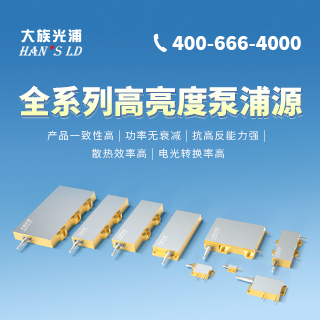
 精彩导读
精彩导读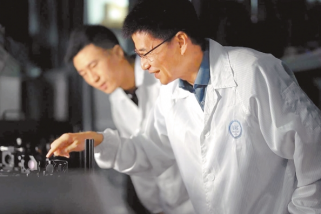

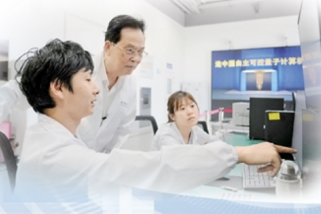








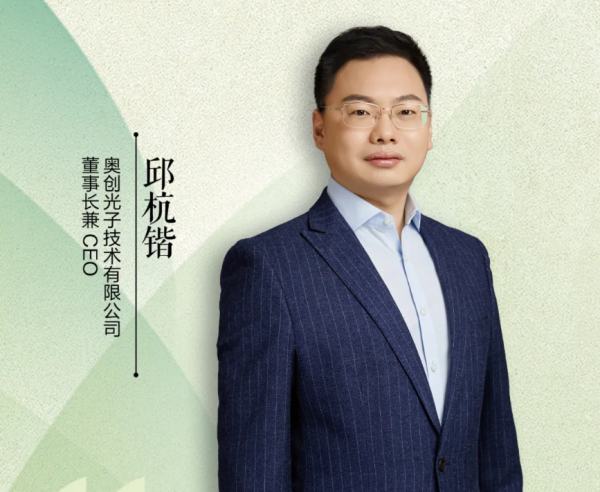

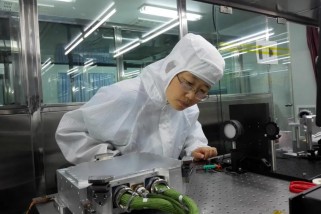


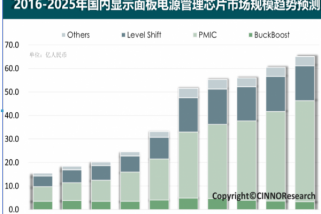
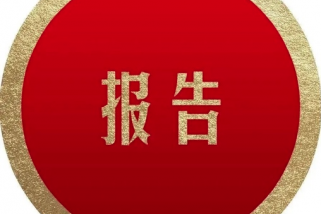
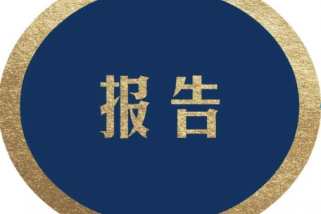
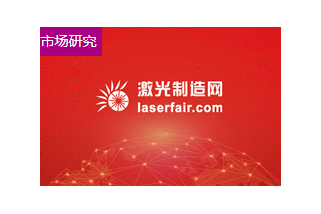
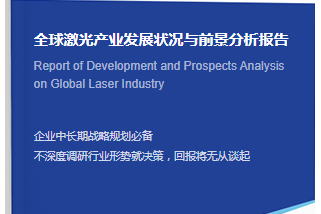

 关注我们
关注我们




